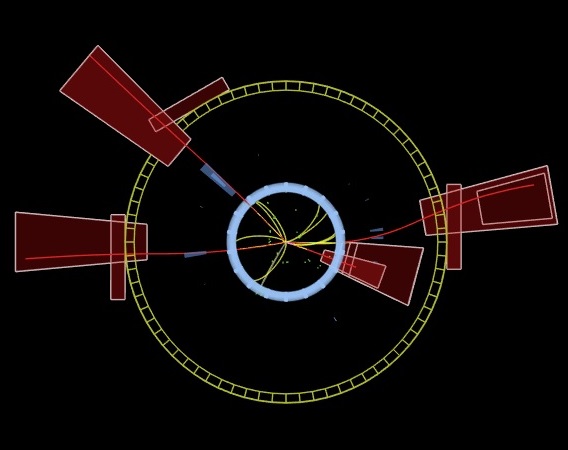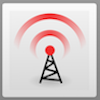Friday Flyer on Monday - April 27, 2020

Spotlight on the Muon
This "heavy cousin" of the electron was discovered in 1936 by American physicists Carl D. Anderson and Seth Neddermeyer while studying cosmic ray showers. Because this particle appeared to have a mass greater than the electron, but less than the proton, it was originally referred to as a "mesotron" from the Greek word mesos, meaning "middle." In the late 1940s, it was referred to as a "mu meson." (At the time, the term meson referred more generally to particles with a mass in the range between electrons and nucleons.) In the 1970s, a meson was defined by composition (two quarks), rather than by mass; so the term "mu meson" was abandoned and replaced with the term "muon," which still stands today as the name for this lepton. (Sources: Wikipedia and symmetry)
Muons often play a key role and are observed in various QuarkNet activities from all data strands: LHC, Neutrino, and Cosmic. Among these activities is the recent BAMC (Big Analysis of Muons in CMS), where students studied interactions that result in muons in the CMS detector to create mass plots. In Calculate the Z Mass, students use muon momentum and energy data from Z boson decays in CMS or ATLAS to calculate the mass of the Z boson. In Mean Lifetime Part 3: MINERvA, data are available from muons that decay in the MINERvA detector to determine muon half-life and mean lifetime. In Mean Lifetime Part 2: Cosmic Muons, students use cosmic ray data they collect or data that are provided to determine the muon lifetime. (An interesting comparison: Do students get similar muon lifetime results using MINERvA and cosmic data?) And, of course, the muon is the featured particle of our cosmic ray program, where students can perform their own analyses using the Cosmic Ray e-Lab, whether they have a detector or not. A reminder that there is now a page with resources for cosmic ray analyses online that may especially come in handy during this time of distance learning. Have questions or need an e-Lab account? Contact one of the QuarkNet staff, and we'll be happy to help!

in CMS viewed using iSpy-webgl.

News from QuarkNet Central
We are working on a few new projects to support teachers during these unprecedented times. We plan to do another BAMC (Big Analysis of Muons in CMS) during the third week in May, and we are planning a series of talks for both teachers and students that will be available each Wednesday in May. Stay tuned for updates!
Mentors and teachers at each QuarkNet center will decide whether and how they can meet this summer. Also, centers may want us to retool QuarkNet National Workshops such as Neutrino Data Workshop for remote online participation. If your center needs to change plans, postpone the workshop, or move it online, or has any request that might help, please let Spencer, Shane, or Ken know. We can work it out.
The AAPT 2020 Summer Meeting in Grand Rapids has been changed to a virtual meeting. For more information about this recent announcement, check out the AAPT website.

Physics Experiment Roundup
From the ATLAS Collaboration at CERN: Probing dark matter with the Higgs boson and new High-Luminosity LHC equipment is installed on either side of ATLAS.
Turning to an application: Fighting COVID with computing.

Resources
Last week, Don Lincoln released Charged Leptons, the third video in his "Subatomic Stories" series. The Fermilab YouTube channel has also organized a Quantum Physics playlist consisting of several existing videos on the subject.
Though the Lederman Science Center and Teacher Resource Center are closed through the end of May, there are many links to activities on their webpage, including a few Fermilab Jeopardy games: Game 1, Game 2, Game 3. H/T Dave Hoppert and Ketevan Akhobadze
The folks at PhET Interactive Simulations have put together a page to help support teachers with remote learning, including the addition of a "remote learning" tag. It is one of several recent additions to the QuarkNet Resources for Teaching Physics Online site.

Just for Fun
From the intersection of art and STEM: A neutrino-inspired musical video and commentary (here's a direct link to the video) and from symmetry, the quantum poet.
And finally, from xkcd: Garbage Math.
QuarkNet Staff:
Mark Adams: adams@fnal.gov
Ken Cecire: kcecire@nd.edu
Spencer Pasero: spasero@fnal.gov
Shane Wood: swood5@nd.edu
